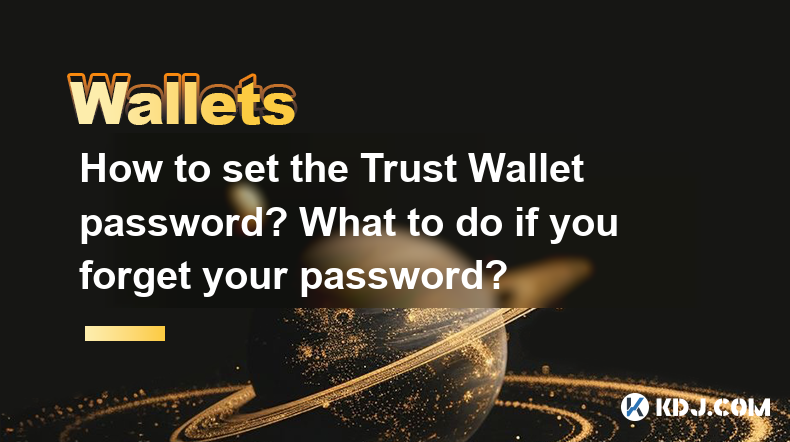-
 Bitcoin
Bitcoin $115100
1.27% -
 Ethereum
Ethereum $3675
2.71% -
 XRP
XRP $2.995
1.45% -
 Tether USDt
Tether USDt $1.000
0.02% -
 BNB
BNB $769.8
2.64% -
 Solana
Solana $168.0
3.25% -
 USDC
USDC $0.9999
-0.01% -
 TRON
TRON $0.3371
1.48% -
 Dogecoin
Dogecoin $0.2051
3.36% -
 Cardano
Cardano $0.7394
2.30% -
 Hyperliquid
Hyperliquid $38.15
0.42% -
 Stellar
Stellar $0.3966
-0.36% -
 Sui
Sui $3.486
2.93% -
 Chainlink
Chainlink $16.72
2.52% -
 Bitcoin Cash
Bitcoin Cash $568.0
4.36% -
 Hedera
Hedera $0.2440
2.59% -
 Ethena USDe
Ethena USDe $1.001
0.04% -
 Avalanche
Avalanche $22.16
2.06% -
 Litecoin
Litecoin $119.1
-0.73% -
 UNUS SED LEO
UNUS SED LEO $8.991
0.04% -
 Toncoin
Toncoin $3.232
-0.39% -
 Shiba Inu
Shiba Inu $0.00001233
2.82% -
 Uniswap
Uniswap $9.717
2.53% -
 Polkadot
Polkadot $3.664
1.85% -
 Dai
Dai $1.000
0.01% -
 Monero
Monero $281.2
-3.89% -
 Bitget Token
Bitget Token $4.350
1.55% -
 Cronos
Cronos $0.1428
5.07% -
 Pepe
Pepe $0.00001050
3.68% -
 Aave
Aave $262.3
3.54%
How to set the Trust Wallet password? What to do if you forget your password?
Setting up a secure password for your Trust Wallet is crucial; use a mix of characters, avoid common words, and keep your recovery phrase safe to protect your digital assets.
May 04, 2025 at 09:28 pm

Setting up a secure password for your Trust Wallet is crucial for protecting your digital assets. Trust Wallet is a popular mobile wallet that supports a wide range of cryptocurrencies, and ensuring the safety of your funds starts with a strong password. In this article, we will guide you through the process of setting up your Trust Wallet password and what to do if you forget it.
Setting Up Your Trust Wallet Password
To begin, you need to download and install the Trust Wallet app from the App Store or Google Play Store. Once installed, follow these steps to set up your password:
- Open the Trust Wallet app on your mobile device.
- Tap on "Create a new wallet" if you are a new user, or "I already have a wallet" if you are restoring an existing one.
- Enter a strong password in the provided field. A strong password should be at least 8 characters long and include a mix of uppercase and lowercase letters, numbers, and special characters.
- Confirm your password by entering it again in the next field.
- Tap on "Continue" to proceed.
It's important to choose a password that you can remember but is difficult for others to guess. Avoid using easily guessable information such as birthdays, names, or common words.
Tips for Creating a Strong Password
Creating a strong password is essential for the security of your Trust Wallet. Here are some tips to help you craft a robust password:
- Use a combination of characters: Include uppercase and lowercase letters, numbers, and special characters.
- Avoid common words and phrases: Do not use easily guessable information like names, dates, or common words.
- Make it long enough: Aim for a password that is at least 8 characters long, but longer is better.
- Use a passphrase: Consider using a memorable phrase and substituting some letters with numbers or special characters.
What to Do If You Forget Your Trust Wallet Password
Forgetting your Trust Wallet password can be a stressful experience, but there are steps you can take to regain access to your wallet. Trust Wallet does not store your password, so you will need to use your recovery phrase to restore your wallet. Here's what to do:
- Open the Trust Wallet app on your mobile device.
- Tap on "I already have a wallet" to start the recovery process.
- Select "Multi-Coin Wallet" and then tap on "Restore using Recovery Phrase."
- Enter your 12-word recovery phrase in the correct order. Make sure to enter each word accurately.
- Create a new password for your wallet. Follow the same guidelines for creating a strong password as mentioned earlier.
- Tap on "Continue" to complete the restoration process.
It's crucial to keep your recovery phrase safe and secure. Never share it with anyone, and consider storing it in a secure location, such as a safe or a secure note-taking app.
Importance of the Recovery Phrase
The recovery phrase, also known as the seed phrase, is a critical component of your Trust Wallet. It is a 12-word phrase that allows you to restore your wallet if you forget your password or lose access to your device. Here are some key points about the recovery phrase:
- It is generated when you create your wallet and is unique to your wallet.
- It should be kept secret and secure. Anyone with access to your recovery phrase can access your wallet and steal your funds.
- It can be used to restore your wallet on any device that supports Trust Wallet.
Best Practices for Password Management
Managing your Trust Wallet password effectively is essential for maintaining the security of your digital assets. Here are some best practices to follow:
- Use a password manager: Consider using a reputable password manager to generate and store complex passwords securely.
- Enable two-factor authentication (2FA): If available, enable 2FA on your Trust Wallet to add an extra layer of security.
- Regularly update your password: Change your password periodically to reduce the risk of it being compromised.
- Never share your password: Keep your password confidential and never share it with anyone, including customer support.
Common Mistakes to Avoid
When setting up and managing your Trust Wallet password, there are several common mistakes that you should avoid:
- Using weak passwords: Avoid using easily guessable passwords such as "123456" or "password."
- Writing down your password: Do not write your password on a piece of paper or store it in an insecure location.
- Using the same password for multiple accounts: Using the same password for different accounts increases the risk of multiple accounts being compromised if one password is breached.
- Ignoring security updates: Keep your Trust Wallet app updated to the latest version to benefit from the latest security enhancements.
Frequently Asked Questions
Q: Can I recover my Trust Wallet if I lose both my password and recovery phrase?
A: Unfortunately, if you lose both your password and your recovery phrase, you will not be able to recover your Trust Wallet. It is essential to keep your recovery phrase in a safe and secure location.
Q: Is it safe to use Trust Wallet on multiple devices?
A: Yes, it is safe to use Trust Wallet on multiple devices as long as you keep your recovery phrase secure. You can restore your wallet on any device using your recovery phrase.
Q: How often should I change my Trust Wallet password?
A: It is recommended to change your Trust Wallet password periodically, such as every 6 months, to maintain the security of your wallet.
Q: Can I use biometric authentication instead of a password for Trust Wallet?
A: Yes, Trust Wallet supports biometric authentication, such as fingerprint or face recognition, as an additional security measure. However, you should still set a strong password as a backup.
Disclaimer:info@kdj.com
The information provided is not trading advice. kdj.com does not assume any responsibility for any investments made based on the information provided in this article. Cryptocurrencies are highly volatile and it is highly recommended that you invest with caution after thorough research!
If you believe that the content used on this website infringes your copyright, please contact us immediately (info@kdj.com) and we will delete it promptly.
- HashFlare Founders Face the Music: Jail Time Looms?
- 2025-08-07 14:30:12
- Toshi on Binance.US: A Memecoin's Big Break
- 2025-08-07 14:30:12
- Bitcoin, SPAC Mergers, and Parataxis: A New Yorker's Take on Crypto's Wall Street Moment
- 2025-08-07 14:50:27
- Bitcoin, Collateral, and Loan Strategies: A New York Minute on the Future of Finance
- 2025-08-07 14:50:27
- Ethereum's Bullish Surge: Reclaiming Crypto Leadership, a New York Minute
- 2025-08-07 14:55:12
- BlockDAG, Litecoin, and Cardano: Charting the Course in Crypto's Dynamic Waters
- 2025-08-07 09:09:06
Related knowledge

How to add Fantom network to MetaMask
Aug 07,2025 at 08:21am
Understanding the Fantom Network and MetaMask IntegrationThe Fantom network is a high-performance, scalable, and secure blockchain platform designed f...

How to export your transaction history from Coinbase Wallet
Aug 07,2025 at 06:50am
Understanding Coinbase Wallet and Transaction HistoryCoinbase Wallet is a self-custodial cryptocurrency wallet that allows users to store, manage, and...

How to export your transaction history from Coinbase Wallet
Aug 07,2025 at 08:49am
Understanding Coinbase Wallet and Transaction HistoryCoinbase Wallet is a self-custodial cryptocurrency wallet that allows users to store, manage, and...

How to avoid crypto wallet scams
Aug 07,2025 at 02:21pm
Understanding Common Types of Crypto Wallet ScamsCrypto wallet scams come in various forms, each designed to exploit user trust, technical ignorance, ...

How to set up a new Ledger Nano S Plus
Aug 07,2025 at 06:01am
Unboxing and Initial InspectionWhen you receive your Ledger Nano S Plus, begin by carefully unboxing the package. Inside, you should find the Ledger N...

How to receive Polkadot (DOT) in your hardware wallet
Aug 07,2025 at 07:03am
Understanding Polkadot (DOT) and Hardware Wallet CompatibilityReceiving Polkadot (DOT) into a hardware wallet begins with understanding the ecosystem ...

How to add Fantom network to MetaMask
Aug 07,2025 at 08:21am
Understanding the Fantom Network and MetaMask IntegrationThe Fantom network is a high-performance, scalable, and secure blockchain platform designed f...

How to export your transaction history from Coinbase Wallet
Aug 07,2025 at 06:50am
Understanding Coinbase Wallet and Transaction HistoryCoinbase Wallet is a self-custodial cryptocurrency wallet that allows users to store, manage, and...

How to export your transaction history from Coinbase Wallet
Aug 07,2025 at 08:49am
Understanding Coinbase Wallet and Transaction HistoryCoinbase Wallet is a self-custodial cryptocurrency wallet that allows users to store, manage, and...

How to avoid crypto wallet scams
Aug 07,2025 at 02:21pm
Understanding Common Types of Crypto Wallet ScamsCrypto wallet scams come in various forms, each designed to exploit user trust, technical ignorance, ...

How to set up a new Ledger Nano S Plus
Aug 07,2025 at 06:01am
Unboxing and Initial InspectionWhen you receive your Ledger Nano S Plus, begin by carefully unboxing the package. Inside, you should find the Ledger N...

How to receive Polkadot (DOT) in your hardware wallet
Aug 07,2025 at 07:03am
Understanding Polkadot (DOT) and Hardware Wallet CompatibilityReceiving Polkadot (DOT) into a hardware wallet begins with understanding the ecosystem ...
See all articles

























































































